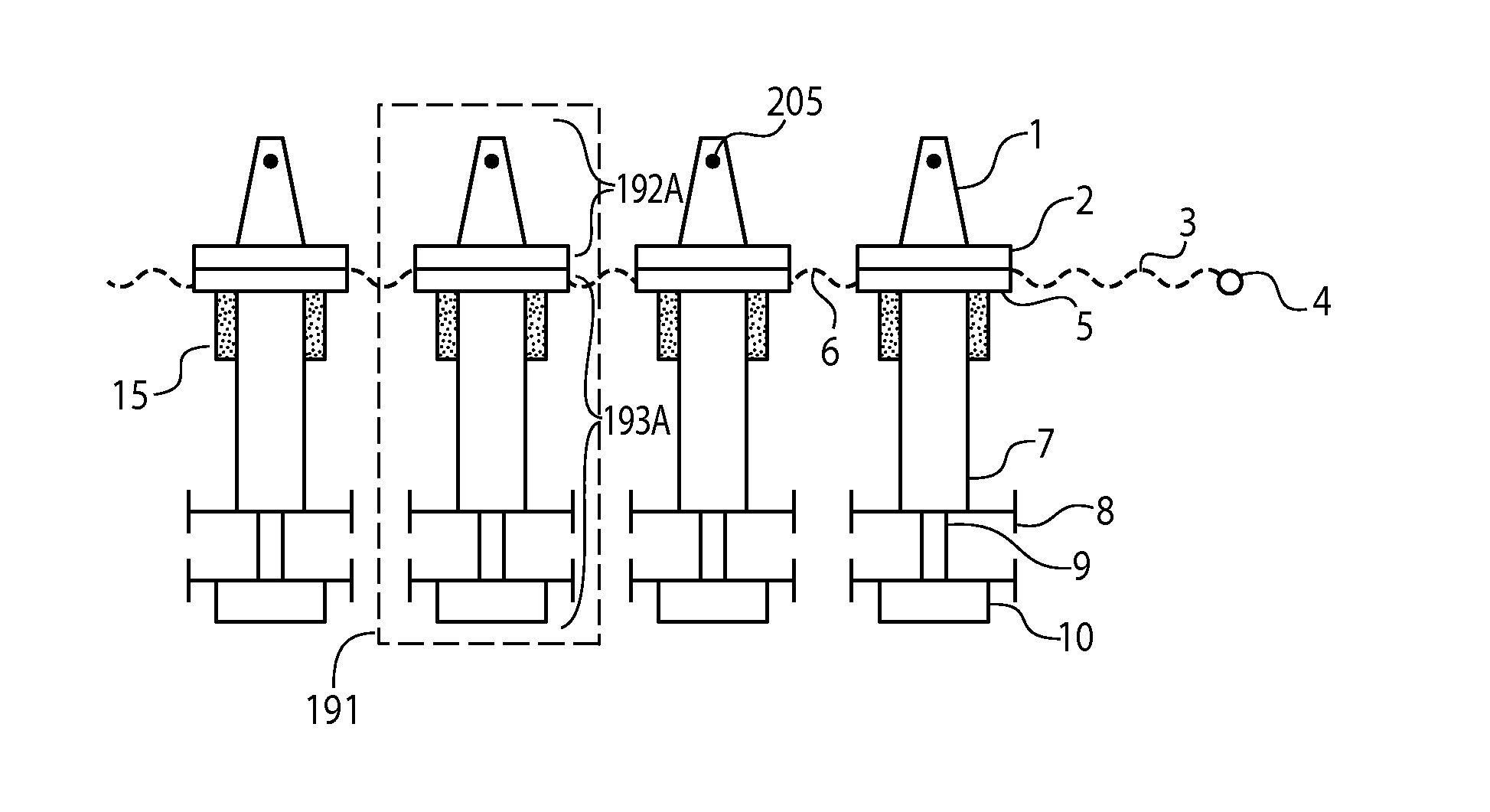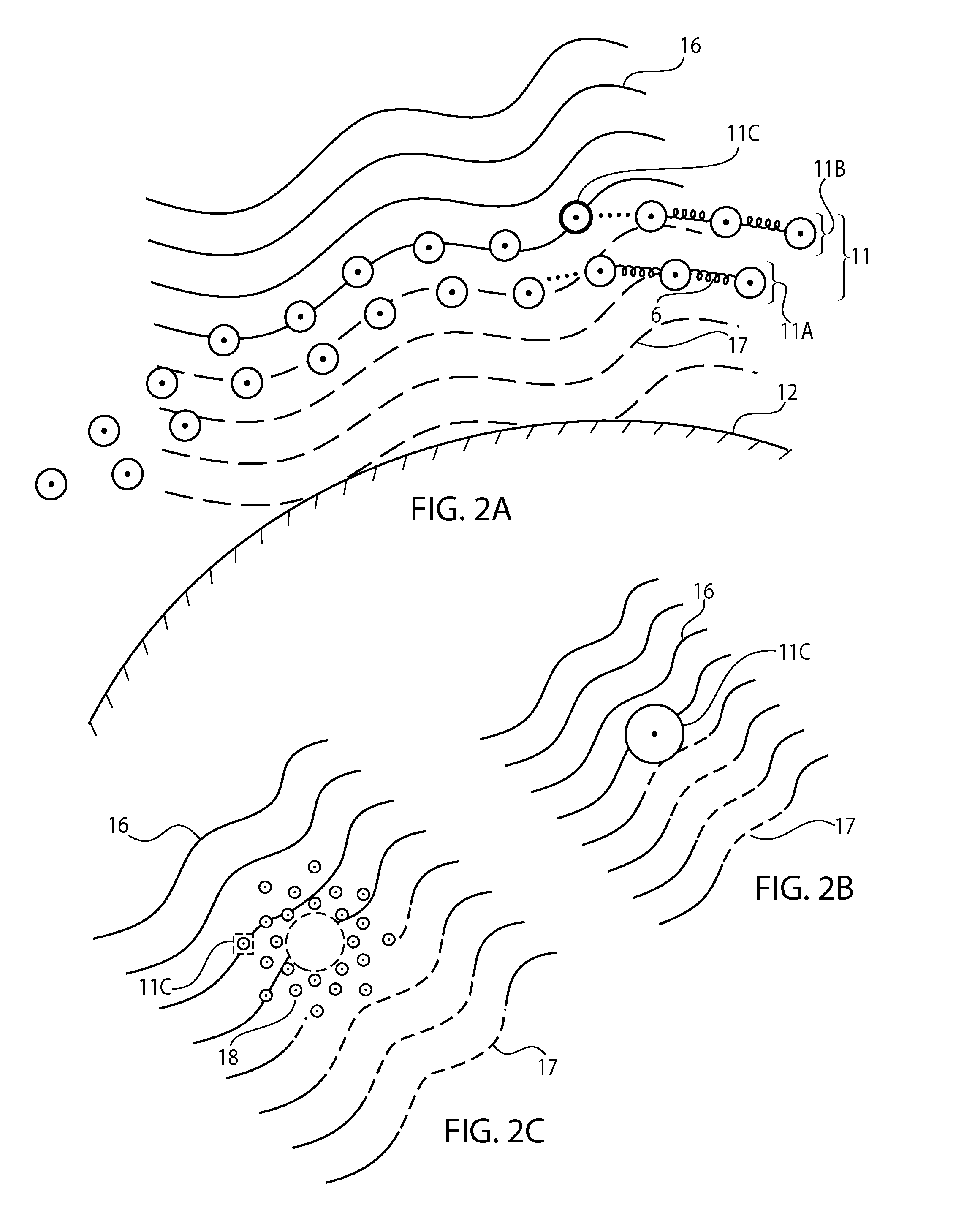Linear faraday induction generator for the generation of electrical power from ocean wave kinetic energy and arrangements thereof
a technology of wave kinetic energy and generator, which is applied in the direction of electric generator control, machines/engines, magnetic bodies, etc., can solve the problems of extreme violent and undesirable standing waves, wave energy is reflected, and wave energy is dissipated, so as to achieve the effect of dissipating the mechanical energy of waves
- Summary
- Abstract
- Description
- Claims
- Application Information
AI Technical Summary
Benefits of technology
Problems solved by technology
Method used
Image
Examples
second embodiment
[0157]While both embodiments of the VLEG are functionally equivalent, the preferred embodiment is for the rotor being the PMA and the FCA being the stator for two important reasons: 1) It can be shown mathematically that the kinetic energy transferred and developed in the rotor is proportional to the mass of the rotor. Thus, the mass of the rotor should be made as large as possible consistent with the ratio of the mass of the mobile submit to the fixed subunit being as small as possible. 2) There are many wire connections that are made between the many coils and the power collection circuitry (PCC). To connect many moving coils with moving wires to a fixed positioned PCC (even allowing for the fact that some of the PCC could be fixed to the FCA rotor itself) would produce serious reliability problems from wire and metal vibrational fatigue and eventual breakage in the rugged environment of the ocean. However, in certain circumstances the second embodiment with a stationary PMA and m...
first embodiment
[0158]Also, with the preferred arrangement, to ensure that a given amount of kinetic energy imparted to the rotor is efficiently converted to electrical energy, there should be two coils in the FCA for every magnet in the PMA or 4 coils for every magnet pair, and the combined width of these four coils should equal approximately the length of two magnet thicknesses plus two pole pieces to ensure that a coil would not be over significant amounts of S and N directed magnetic field lines simultaneously which would seriously degrade efficiency and power output except briefly when a given coil would be over the precise center of a magnet's longitudinal thickness. If the thickness of the power producing magnet is Tm and the thickness of the pole piece is Tp, then the width of each of the four coils should be, in the preferred configuration, approximately (Tm+Tp) / 2. This preferred configuration is most efficacious when the amplitudes of the incoming waves are relatively small, as is with ca...
PUM
 Login to View More
Login to View More Abstract
Description
Claims
Application Information
 Login to View More
Login to View More - R&D
- Intellectual Property
- Life Sciences
- Materials
- Tech Scout
- Unparalleled Data Quality
- Higher Quality Content
- 60% Fewer Hallucinations
Browse by: Latest US Patents, China's latest patents, Technical Efficacy Thesaurus, Application Domain, Technology Topic, Popular Technical Reports.
© 2025 PatSnap. All rights reserved.Legal|Privacy policy|Modern Slavery Act Transparency Statement|Sitemap|About US| Contact US: help@patsnap.com



